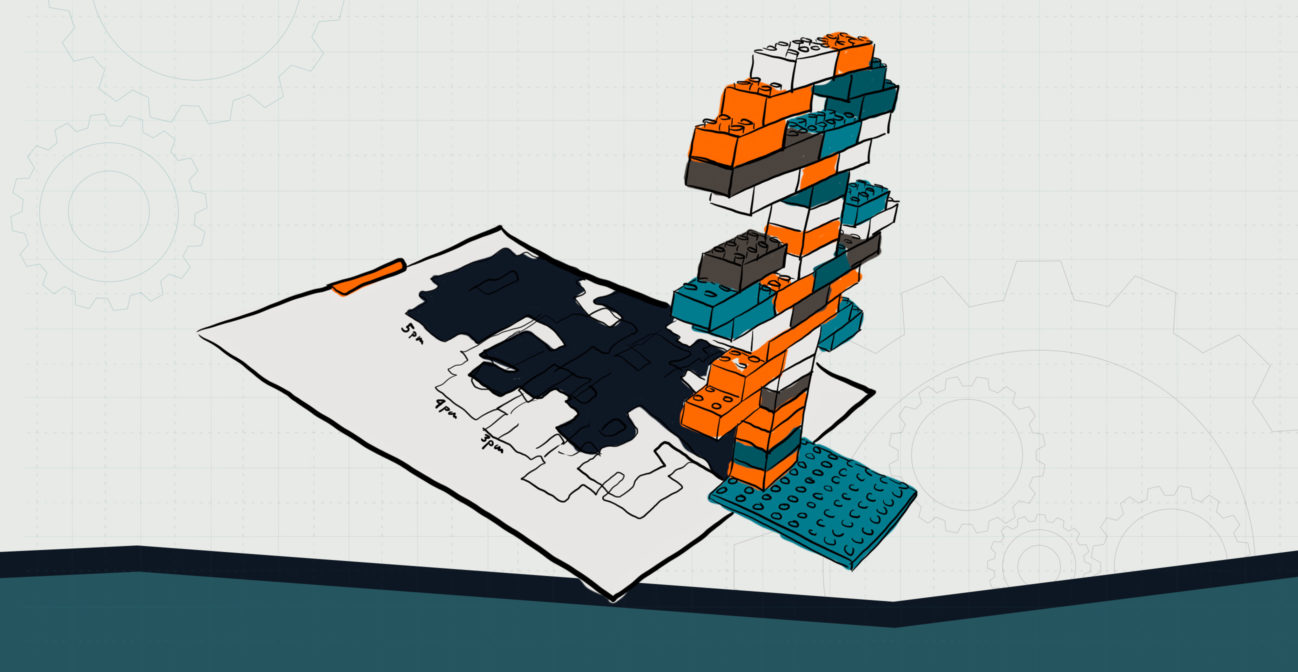Objective:
Child will measure the movement of the sun through measuring the movement of shadows.
Essential Question(s):
How can we track the sun’s movement?
Special Materials:
Paper and colored pencils, masking tape, paper or poster board
Bricks Required:
8×8 plates, 2xN bricks
Project Structure
Engage:
- Ask child to observe the length of their shadow while they are outside; ask them to notice if it is the same length at all times, and to think about why that is.
- Ask child about the movement of the Earth and the Sun, and how we can tell what is moving.
- Have child provide a brief explanation of how they think the movement of the Earth/Sun systems affect their shadows.
Explore:
- Have child build a tall-ish creation (2xN bricks are most ideal for stability reasons) on an 8×8 plate.
- Set out the creation on a piece of paper or poster board taped to the ground in the sun. Have child trace the base of the creation to help with placement if it gets bumped, then trace the shadow, and write down the time next to the top of the shadow.
- Periodically, child should return and trace the shadows, noting the time and taking a measurement. It’s helpful to use a different colored pencil each time.
- Child should keep track of the time and shadow length in a data table.
- At the end of the day, child measures each shadow from the base of the creation to the top of the shadow, then makes a table of their data, noting the time and length for each measurement taken.
- Child may also want to re-trace their shadow to create a clearer line (it’s tricky to trace on the ground).
Explain/Elaborate:
- Child should plot their data in an x-y coordinate plane.
- Ask child to draw conclusions from their data:
- What direction is the Earth spinning? i.e., which direction is the Sun appearing to move?
- The Earth spins counterclockwise, causing the Sun to appear to move east-to-west.
- How can this motion be seen in the night sky?
- What effects do the time of day and year have on the lengths of the shadows?
- You may opt to collect data in fall, winter, and spring, and culminate the project in spring, comparing all three sets of data.
